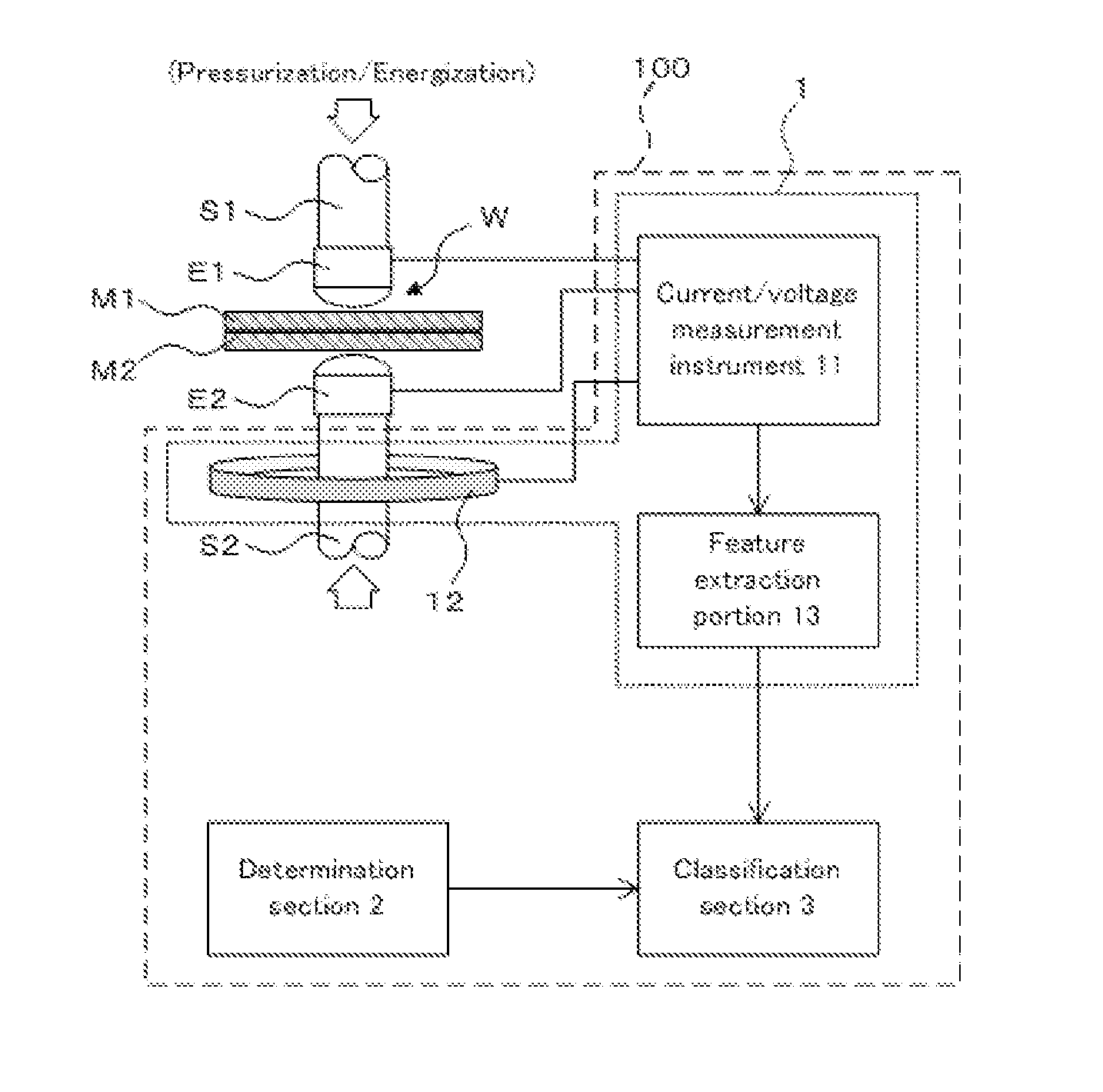Welding quality classification apparatus
a classification apparatus and welding technology, applied in the field of welding quality classification apparatus, can solve the problems of requiring time and effort, unable to accurately evaluate the welding quality, and 1 having a risk of classifying the welding quality as poor, so as to achieve the effect of relative ease and high accuracy
- Summary
- Abstract
- Description
- Claims
- Application Information
AI Technical Summary
Benefits of technology
Problems solved by technology
Method used
Image
Examples
Embodiment Construction
[0075]Hereafter, referring to the appended drawings, an embodiment of the present invention will be described by exemplifying a case where welding quality in spot welding of metallic material is classified by using welding current and welding voltage. Note that in each Formula described in the present specification, parameters indicated by bold-faced italics represent vectors.
[0076]FIG. 1 is a schematic configuration drawing of a welding quality classification apparatus 100 relating to the present embodiment. As shown in FIG. 1, the welding quality classification apparatus 100 includes an acquisition section 1 for acquiring features, a determination section 2 for determining a discriminant function, and a classification section 3 for classifying welding quality.
[0077]The acquisition section 1 includes a current / voltage measurement instrument 11 and a toroidal coil 12 as a measurement portion for measuring a welding current and welding voltage upon spot-welding a welded joint W of ma...
PUM
| Property | Measurement | Unit |
|---|---|---|
| Weight | aaaaa | aaaaa |
| Distance | aaaaa | aaaaa |
Abstract
Description
Claims
Application Information
 Login to View More
Login to View More - R&D
- Intellectual Property
- Life Sciences
- Materials
- Tech Scout
- Unparalleled Data Quality
- Higher Quality Content
- 60% Fewer Hallucinations
Browse by: Latest US Patents, China's latest patents, Technical Efficacy Thesaurus, Application Domain, Technology Topic, Popular Technical Reports.
© 2025 PatSnap. All rights reserved.Legal|Privacy policy|Modern Slavery Act Transparency Statement|Sitemap|About US| Contact US: help@patsnap.com



